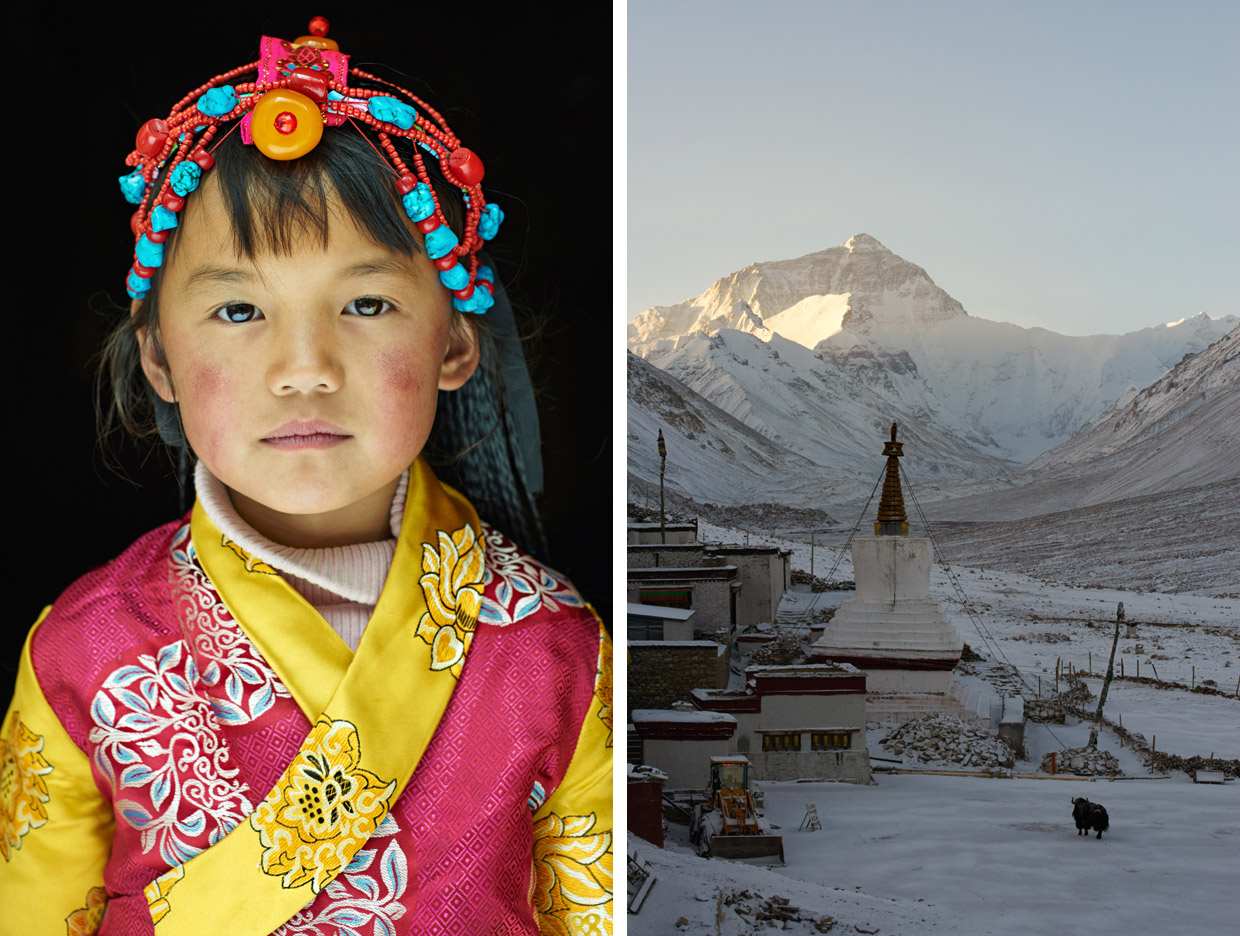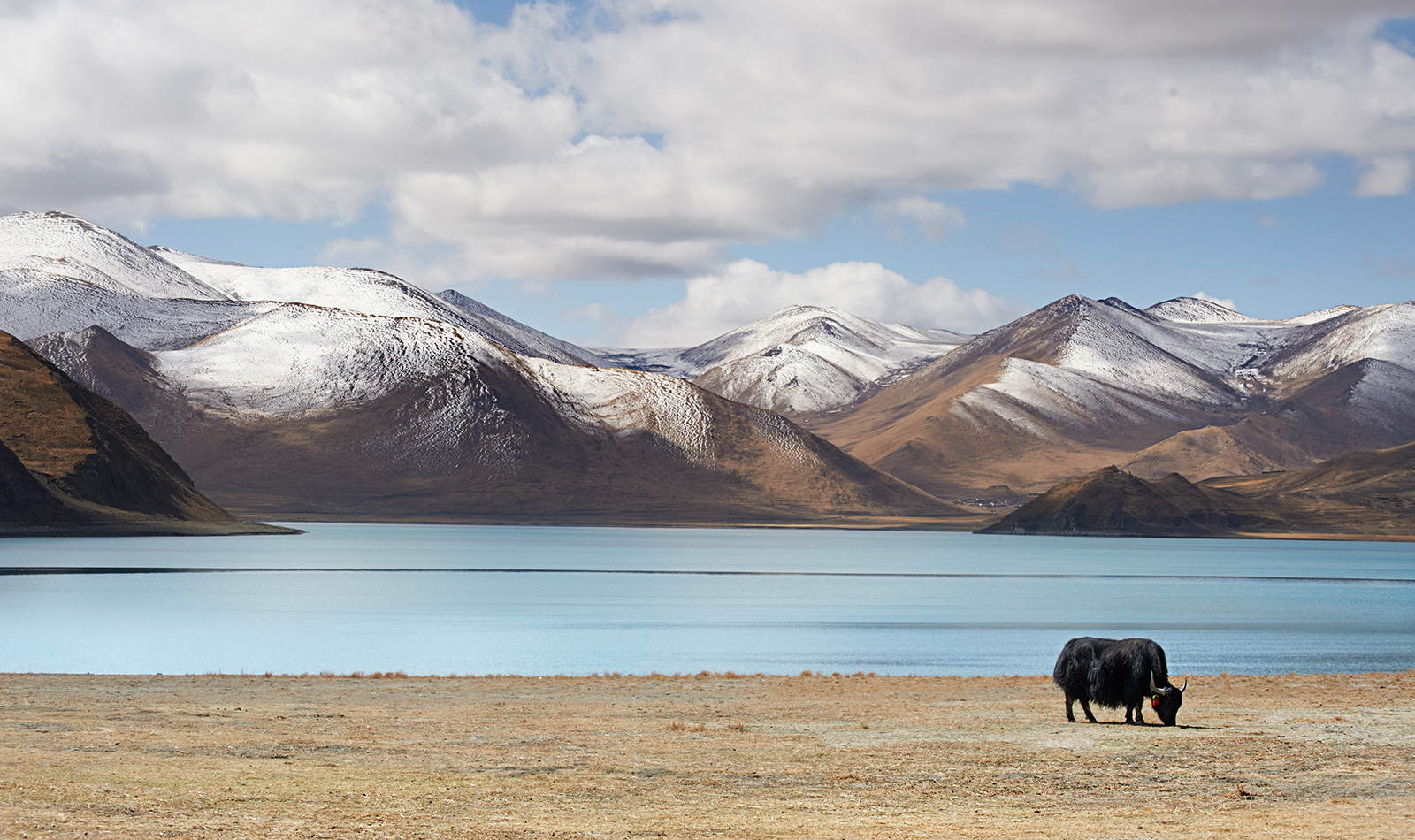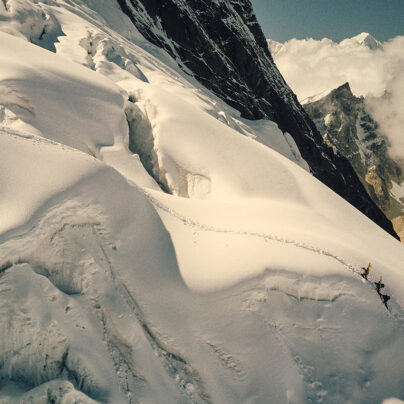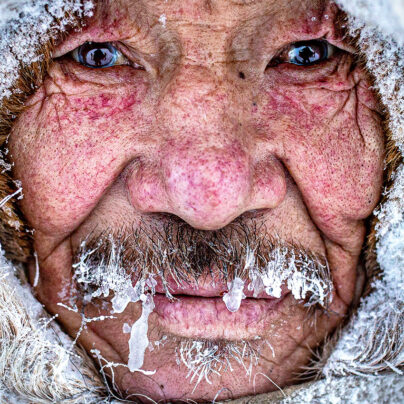Kora
Words & Photography by Simon Urwin
A chorus of roosters heralds dawn in the tiny village of Jiabi as Abá rises to attend to his song ra, lighting bundles of juniper in the ceremonial clay oven as an offering to the mountain gods. ‘This keeps the rains coming and the fields fertile,’ he announces confidently before heading off to complete his morning kora.
A cornerstone of Buddhist life, the kora is an act of devotion carried out day and night across the Himalayas, as Tibetans perform circular pilgrimages around their most sacred sites, spinning prayer wheels and thumbing rosary beads as they go. I’ve arrived in Jiabi at the start of a grand kora of my own: a three-week journey that will take me from the Tibetan tracts of rural Yunnan province, onward to Lhasa, and then across the Roof of the World to Everest Base Camp before finally looping my way back home.
An hour passes and Abá returns, just as the sun climbs over the high peaks, warming the valley below. From the roof of his house, I sit and watch the simple rhythm of village life gently unfold. Cattle are milked and chickens fed. Sheaves of barley are cut to mill into bread flour or distil into ará, the local firewater. It’s a place rich in tradition and eternal superstition, where villagers take great care not to raise their voices as they go about their daily industry for fear of disturbing the malevolent, serpentine spirits that are said to inhabit the fields. Then, come nightfall, they lock their doors firmly against the chill, mindful that now is the time when the wandering souls of the dead come looking for a new home.



The road leaving Jiabi follows the muddy Yangtze before veering off towards the borderlands of Sichuan, Yunnan, and Tibet, the treeline slowly disappearing as the altitude steepens and herds of sharp-horned yak appear on the horizon. Icons of the high plateau, Yaks are revered beasts of burden that have played a central role in Tibetan culture for well over 2,000 years. Nomads set fires with their dung, knit tents with their hair, and cherish the milk of the female dri, which is laboriously churned into butter in ornate mdong mo.
On the approach to Xianggelila, I come across Lamu, a Khampa ethnic herder, who invites me into her stockade for a cup of po cha – which she assures me is good for hydration and energy at high altitude. I study the soapy concoction of yak butter, tea leaves, salt, and soda, and drink. She momentarily disappears, then returns with a pungent block of butter kept safe for special occasions. ‘This one I only use for filling butter lamps when I get to the monastery,’ she says, cutting off a generous square and wrapping it in brown paper. With a smile, she hands over this valuable and generous gift, and wishes me well on my journey ahead.
The imposing sight of the Potala Palace – the former residence of the exiled Dalai Lama – marks my arrival into Lhasa. Once known as the ‘Forbidden City’, it now feels unmistakably Chinese, with red lanterns and neon signs in Mandarin incongruously lining the streets. The atmospheric Barkhor is one area of Lhasa to have at least partially resisted the invasion of the modern world. Throngs of worshippers polish the flagstones with their footsteps, some fully prostrate as they circle the Jokhang Temple on the city’s most hallowed pilgrimage route. ‘The Buddha always walked clockwise, so we are following our god,’ a local man tells me as I join the multitude. ‘The kora we follow also represents the circle of life. Where you start is where you end, so if you do good things, you will get good fruits.’
From Lhasa I head south on vertiginous roads, rounding Yamdrok-tso, one of Tibet’s holiest lakes, its waters dazzling turquoise, its shoreline flecked with dwellings draped in colourful prayer flags. The most prevalent is the lungta, or Wind Horse, said to spread compassion and well-being with every flutter of its mantra, and marked with a steed bearing the burning jewel of enlightenment on its back. In one house I meet an industrious old man hand-printing flags on woodblocks stained with centuries of ink. This process is believed to increase their potency. ‘The Wind Horse represents good fortune,’ he says as he hangs fresh rectangles of cotton out to dry. ‘The flag fades and dissolves in the sun and on the wind, and when its spirit touches you, good opportunities will come your way.’




I pass through the fortress town of Gyantse, and cross long stretches of harsh, inhospitable terrain before I arrive, as dusk overwhelms daylight, into Shigatse, home of the sprawling Tashilhunpo. One of the largest and finest buildings in the Buddhist world, the monastery is alive with the sound of a hundred young monks emptying from the main prayer hall and hurriedly pulling on yellow hats that resemble cockerels’ combs. They form a circle in the courtyard and, following the lead of the master lama, begin to sway in unison, booming out the words of sacred texts – powerful chanting reverberating around stone walls and trembling in my torso. Night has already fallen by the time their profoundly affecting music has reached its crescendo.
I continue westward, the elevation steepening further, the road snaking wildly towards the foot of the Great Himalayan Range where heavy cloud and swirling snow obscure Everest from view. Close to Base Camp at Rongbuk, the highest monastery in the world, I refuel guttering altar lamps with my yak butter to symbolically mark the nearing of journey’s end. Sleep is impossible in the biting cold, so next morning, well before dawn, I climb up beyond the monastery walls and wait. Slowly the outline of Chomolungma – the ‘beautiful queen’ as Tibetans know her – begins to emerge from the shadows. Then, moments later, her north face is revealed in all its glory, the looming peak magically bathed in the first rays of morning sun.
My kora is complete.
This story was first published in Sidetracked Magazine Volume 13
Words and photography by Simon Urwin
Website: simonurwin.com
Twitter: @SimonUrwinPhoto
Instagram: @simonurwinphoto






